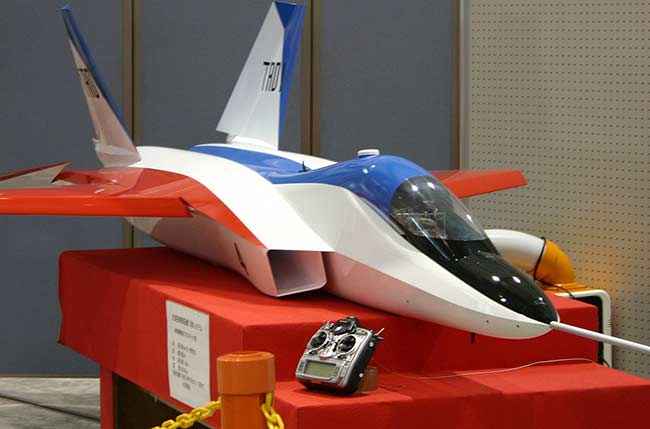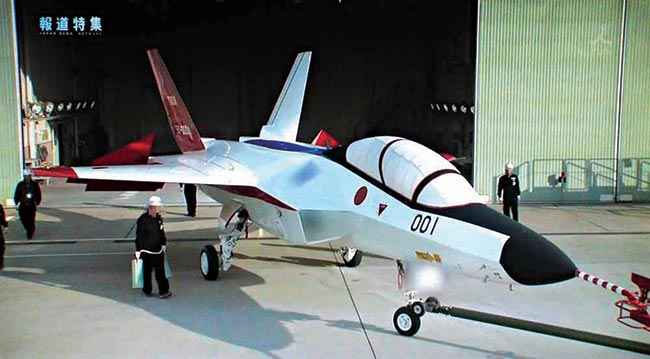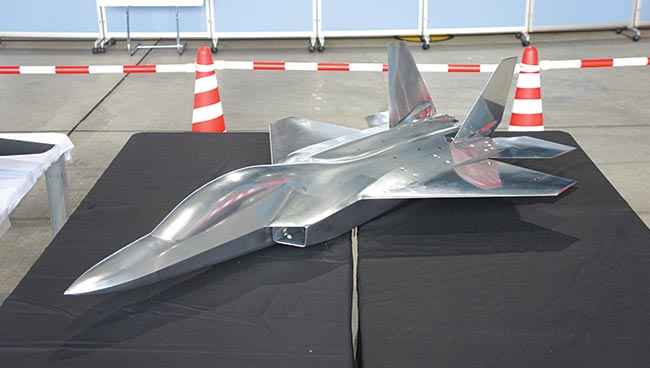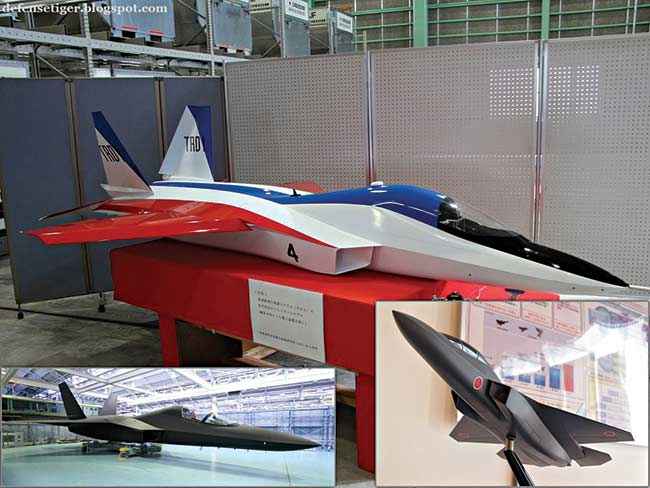Everything you need to know about Japan’s X-2 ShinShin
Japan's X-2 ShinShin is its new stealth fighter
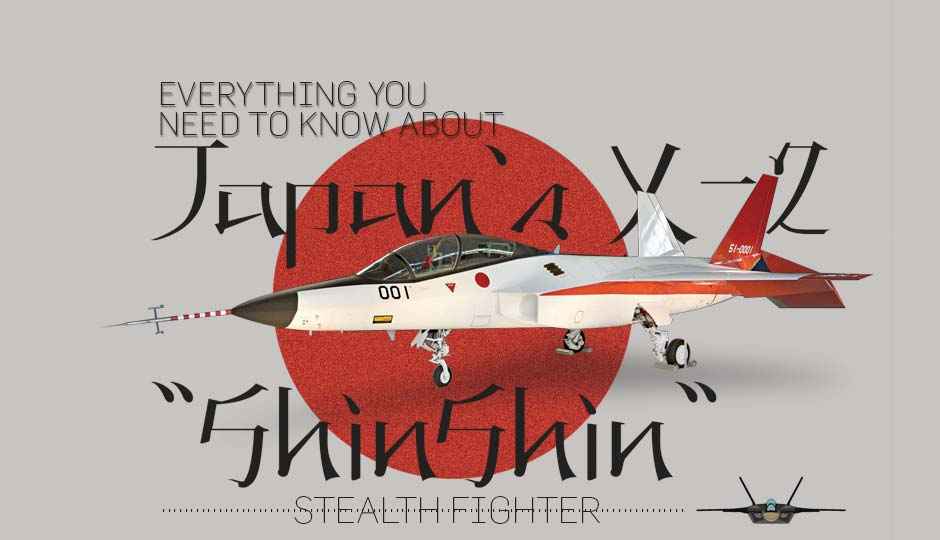
Informally known as the Shinshin (spirit of the heart) in Japan, the Mitsubishi ATD-X is the country’s first indigenously designed and developed fifth-generation air superiority fighter. Does that mean the Shinshin stealth fighter will beat USAF’s long delayed F-35 Lightning II as the second ever fifth-generation jet fighter to enter active service since the Lockheed Martin F-22 Raptor? Not even by a long shot.
 Survey
SurveyMore concept than reality
The Shinshin’s military designation is ATD-X for a reason, as it stands for Advanced Technology Demonstrator. Even in its latest X2 iteration, which took its first flight recently, the Shinshin can’t even be called a prototype, but a proof-of-concept of sorts whose main purpose is to serve as a platform for all the subsequent research and development required to come up with a viable fifth-generation air superiority fighter design. The Shinshin only serves as a stepping stone to the real frontline stealth jet fighter designated as the F-3, which won’t be going into production any time before 2027.
To put this into perspective, Lockheed Martin’s own fifth-generation stealth fighter jet, the F-35 Lightning II, has been in production since 2006, but it has yet to be inducted into service. Needless to say, don’t get too excited because it will be decades before the Shinshin joins active service; if at all, that is, because let’s not forget the X2 is nothing more than a proof-of-concept, and not even a prototype. It isn’t even the only fifth-generation fighter aircraft under development. A whole host of nations from the minnows Iran and Turkey to the formidable China, Russia, and even India (with Russian assistance) are working on their own answers to the American F-22 and F-35. The Russian Sukhoi Pak FA and the Chinese Shenyang J-31 have already completed their first flights and the former is slated to be rolled out into service in 2017.
The blueprints
However, before we get into the nitty gritties of the Japanese fifth-generation jet fighter, it’s prudent to understand what the term entails, and why Japan has been pursuing it aggressively. Military jet fighters are classified according to the sophistication of their avionics (aircraft electronics), radars, communication, armament, and flight characteristics such as manoeuvrability and stealth technologies. To give a brief primer on the important fighter generations, the third-generation aircraft focused on development of sophisticated attack capabilities by employing missiles and smart bombs that relied on radar, thermal, and laser guidance.
The fourth-generation jet fighters deviated from the last generation’s overdependence on missiles and instead pursued improved manoeuvrability by incorporating high-tech fly-by-wire systems, powerful flight computers, and powerful thrust vectoring engines that allowed jet fighters of that era to deliver significantly better dogfighting capability. This was followed by an evolutionary upgrade to this generation dubbed 4.5 generation that further enhanced fighter manoeuvrability by incorporating inherently canard-equipped unstable delta wing designs that require powerful avionic systems and flight control computers just to keep these aircraft from falling out of the skies. All these enhancements enabled these jets to achieve insane angle of attacks, rapid climb rates, and ultimate manoeuvrability.
The mid-generation upgrade also added superior Active Electronically Scanned Array (AESA) radars and stealthy, yet precise Infra-Red Search and Track (IRST) systems to hunt enemy aircraft more effectively. The use of exotic lightweight, yet high strength engineering materials enabled engineers to not only increase the overall performance, but also subject the aircraft to greater g-forces, thereby allowing for even tighter and previously impossible levels of agility. This generation also saw the use of radar absorbing paints and materials that significantly reduced the radar signature and made these fighters difficult to track and detect with conventional radar systems.
Stealth capable jet fighters
Cut to the present and fifth-generation fighters essentially combine all the defining characteristics of 4.5 generation aircraft such as advanced avionics, high-tech airframes built with exotic high-strength materials, inherently unstable and flight computer-dependent design for the control surfaces, undetectable inter-aircraft communication systems and such with a more focused approach to stealth. First-generation stealth technology has existed before fifth-generation fighters were introduced, but this was restricted mainly to dedicated bombers and strictly ground attack jets such as the B-2 Spirit bomber and F-117 attack jet. These aircraft achieved stealth with a host of radar absorbing materials and airframe design geared towards deflecting radar waves away from the source.
However, these design considerations limited manoeuvrability and speed, which prevented the application of true stealth technology in jet fighters, which are meant to be agile and fast. This is where fifth-generation fighter approach to stealth comes in, which covers all aspects of flying undetected but also involves moving quickly and nimbly while being able to track enemy aircraft without opening themselves for detection. This includes advanced Low Probability of Intercept Radar (LPIR) systems that enable an offensive stealth approach that isn’t just limited to ground targets. Another important aspect of the new generation fighters involves the ability to achieve higher situational awareness by the means of battlefield networking technology that allows these jets to communicate without blowing their cover.
Why is stealth needed?
Now that we know what entails a fifth-generation air superiority jet fighter, it’s worthwhile to find out exactly why Japan is pushing to develop its own frontline stealth fighter. Let’s not forget that we’re dealing with a nation that shies from the very notion of war. One that goes to euphemistic extremes by referring to its armed forces in a painfully benign fashion as Japan Ground Self-Defense Force (JGSDF), where the recruits are largely trained with airsoft replica guns instead of the real deal. It’s hard to swallow the fact that the same country that depends upon US military for protection would want to produce something as advanced as a fifth-generation stealth fighter.
The ShinShin will hopefully be the defender of Japanese skies
One hypothesis points towards the rising hostilities and threat from North Korea prompting some Japanese politicians eager to break Japan’s age old non-proliferation policy and develop nuclear weapons. Possessing a viable stealth air superiority platform is a great asset under such circumstances. Another catalyst for the decision comes from the fact that the F-22 manufacturer Lockheed-Martin was prohibited from selling the air superiority fighter to Japan. Interestingly, unconfirmed reports peg the F-22 maker to be involved in the development of the ShinShin X-2 technology demonstrator.
Another possible reason could be the current US military’s rapidly diminishing power and edge, as evidenced by the recent annexure of Crimea, Russian foray into the Middle East, and being surpassed by the Chinese economy and challenged by its growing military might. To put this into perspective, the US air force would have needed 150 aircraft to protect Taiwan against Chinese air force back in 1996. Today, the estimated number stands at nearly 2000, which makes it nigh impossible for the USAF to realistically deploy enough aircraft to rescue Taiwan from a Chinese aerial onslaught. It makes perfect sense for the Japanese to invest in means to reduce its dependence on the US for security.
Let’s not forget that the US government will be selling the fifth-generation F-35 Lightning II to the Japanese, but the platform has gone seriously over-budget and is marred with performance issues and damning glitches. Not to mention, the fact that it also famously got outclassed by the F-16, a jet fighter built in the ‘80s. The overpriced and highly underperforming F-35 purchase, therefore, is only a stop-gap solution until the Japanese induct their own fifth-generation air superiority fighter.
Crouching tiger, radar invisible dragon
However, the most pressing compulsion behind the Japanese rush to procure a fifth-generation air superiority platform by far happens to be the the stealth jet arms race kickstarted by China with its own fifth-generation stealth fighter in the last decade. The stealth fighter took everyone by surprise because until then China was considered incapable of making competitive fourth or even third generation aircraft, let alone possess the expertise and know-how to develop a sophisticated fifth-generation air dominance fighter.
Thanks to Edward Snowden’s efforts, it was later revealed that China had essentially stolen several terabytes of critical F-35 data – on everything from radar systems, engine schematics, and heat-masking design implementations to super secret information on stealth systems – right off Lockheed Martin’s servers. What’s more, the Chinese had also managed to swipe F-22 blueprints to create its own copycat versions of USAF’s F-22 and F-35 stealth aircraft. The more sophisticated Chengdu J-20 Black Eagle is the equivalent of the F-22 Raptor, whereas the Shenyang J-31 Gyrfalcon is nearly the exact copy of the F-35 Lightning II.
If the capabilities of the ShinShin stealth fighter are to be compared, it must be pit against its most likely regional foes – the J-20 and (to a lesser extent) J-31. However, unlike the Chinese stealth fighter jets slated to enter service within the next two years, the Japanese Shinshin isn’t a final design and won’t be deployed anytime before 2030. Mitsubishi is still in the R&D phase, and the specifications on the ShinShin research concept are essentially projections that are subject to change pending extensive feasibility tests. In the simplest of terms, such a comparison would be akin to pitting the existing capabilities of the Chinese stealth jets against what the Japanese hope to incorporate into their F-3 stealth platform over the course of the next decade.
How does it compare?
While the information on the J-20 is sketchy, it’s capable of supercruise. In other words, it can achieve supersonic flight without employing fuel-inefficient afterburners. The Russian Sukhoi PAK FA achieves the same feat at Mach 1.6, whereas the F-22 is a bit faster at Mach 1.82. The J-20, however, has a relatively slower maximum speed of Mach 2.0, as opposed to the F-22’s Mach 2.25 and the PAK FA’s Mach 2.3. The ShinShin aims to achieve a max speed exceeding Mach 2 with its 11,000 lbf twin turbofan engines, with a supercruise capability on par with that of the F-22. Like its contemporaries, the Japanese stealth aircraft will incorporate advanced three-axis 3D thrust vectoring technology similar to that seen on the US Rockwell X-31 experimental aircraft. If Mitsubishi were to pull this engine off, it would enable the Shinshin to achieve a crazy angle of attack and perform spectacular feats of agility that should come handy in dogfights.
The X-2 aims to reach speeds in excess of Mach 2
In its current X-2 iteration, the ShinShin has a projected combat range of 2,900 km and a combat range of 761 km, which is on par with the F-22, but only a fraction of the range achievable by the PAK FA, which can reach out to a maximum of 3,500 km. This doesn’t really matter much, since Japan is essentially concerned with defending its own airspace or reaching North Korea, which falls well within range. What’s more interesting is the upgrade to avionics, which surpasses the current standards for fifth-generation aircraft. Copper-based fly-by-wire controls are being replaced by faster and interference resistant optical fibre connections. In addition to advanced AESA radars, the ShinShin’s avionics will incorporate sophisticated survivability implementation dubbed self repairing flight control capability that allows the aircraft to compensate for damaged control surfaces and dynamically reconfigure working ones to regain control.
A bird in hand…
Any further comparisons are moot since not much else is known about the Mitsubishi ATD-X platform. Furthermore, all of these specifications are goals that will invariably be subject to revisions, additions, and even omissions pending the many flight tests and redesigns that will take place over the course of the next decade. Comparing the ShinShin to existing fifth-generation offerings from China, Russia, and USA is a bit like comparing apples to non-existent oranges that haven’t even been harvested yet.
The ShinShin in all its glory
However, it is worthwhile to note that the ShinShin project initially began as a sort of Japanese bargaining chip to pressure USA into selling its F-22 fighters after the Chinese J-20 stealth aircraft was revealed. The programme only assumed any degree of seriousness near the end of the last decade when US Congress made it clear that it wouldn’t be selling the F-22 to anyone. The rumoured involvement of F-22 creator Lockheed Martin and the ShinShin’s cosmetic and operational similarities to the US air superiority fighter could very well translate into a force to be reckoned with. Just remember that it’s all conjecture at this stage, when the cold, hard reality is that the Chinese and the Russians will have inducted operational units in the next two years. You can’t possibly beat that with an unproven concept.
This article was first published in the March 2016 issue of Digit magazine. To read Digit's articles first, subscribe here or download the Digit e-magazine app.
